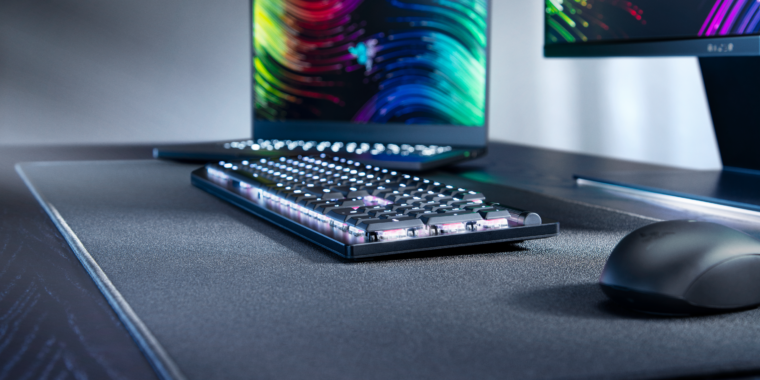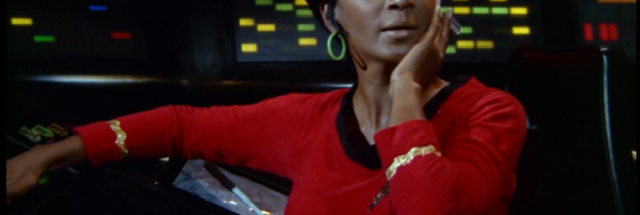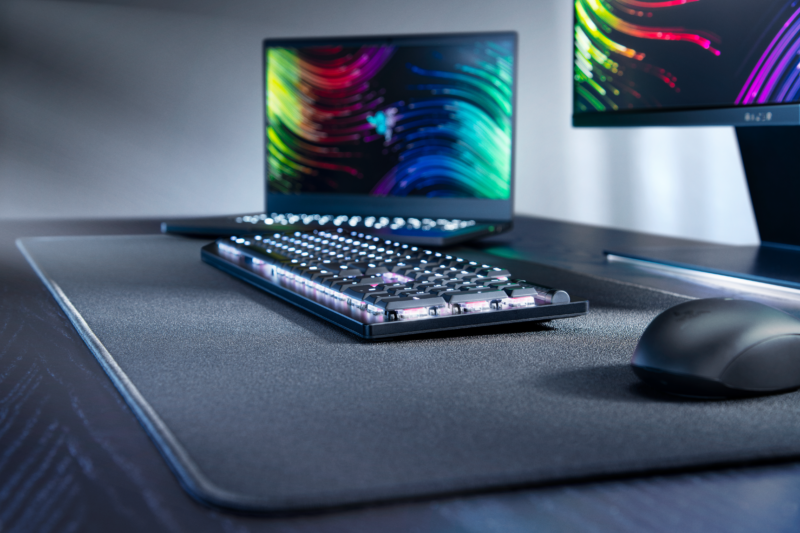
Peripherals and PC maker Razer this week introduced a new wireless mechanical keyboard that resurrects one of its most creepily named products. The DeathStalker V2 Pro—as well as its wireless, tenkeyless version and wired, full-sized version—manages to be just 1 inch tall at its thickest part by using low-profile mechanical switches that rely on light-based actuation. They’re the first keyboards to use Razer’s Low-Profile Optical Switches.
Optical mechanical switches actuate when the switch’s stem interacts with an infrared light beam within the switch’s housing. Razer already sells optical switch keyboards, like the Razer Huntsman Mini Analog, whose keys are also pressure-sensitive. But this is the first time the company has made its optical mechanical technology so short.
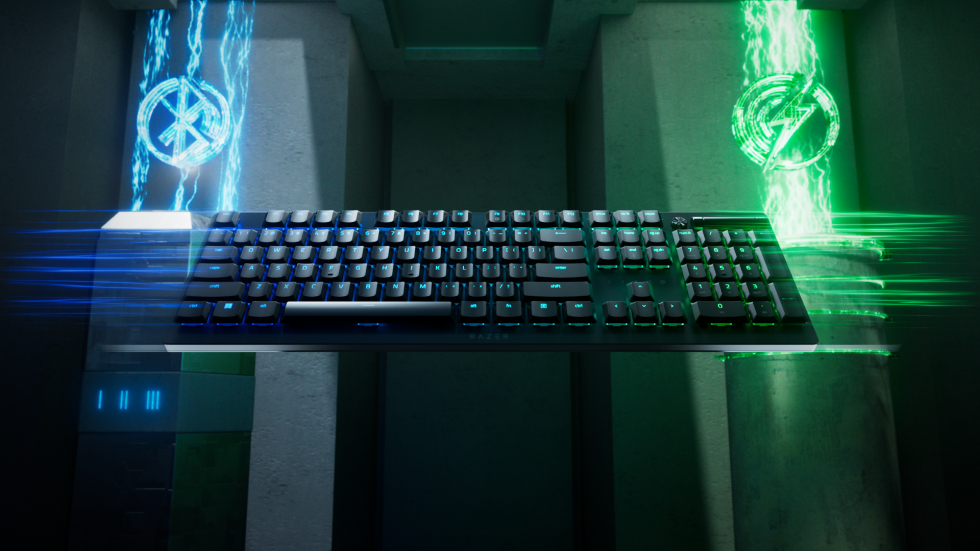
The linear optical mechanical switches have a travel distance of 2.8 mm, and they actuate at 1.2 mm with a force of 45 g. For comparison, Cherry MX Reds, have 4 mm of travel and actuate at 2 mm with a force of 45 g.
The clicky optical mechanical switches offered in the DeathStalker V2 Pro also have 2.8 mm of travel but actuate at 1.5 mm with 50g of force. That makes them easier to actuate than Cherry MX Blues (4 mm / 2.2 mm / 60 g).
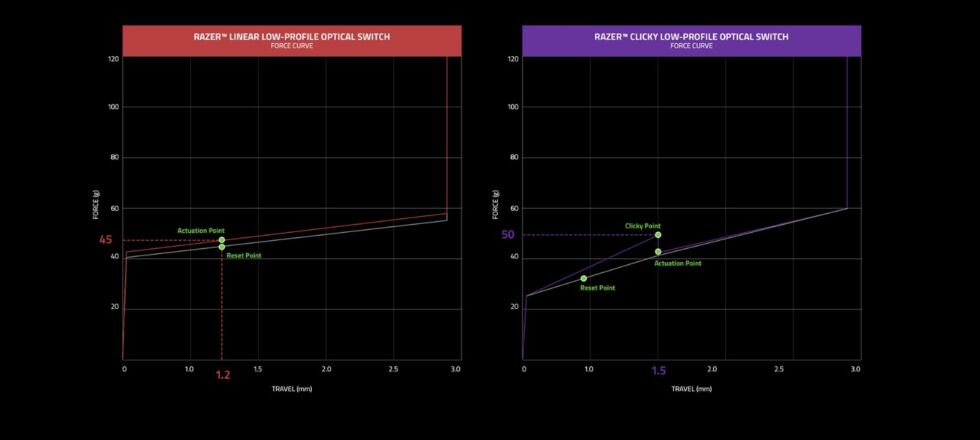
Low-profile switches can be divisive. Some users, like gamers, appreciate the short key travel for quick input. But depending on the keyboard and switch type, typing can feel shallow or mushy. Low-profile switches can also appeal to those averse to mechanical keyboards’ bulky reputation or those who have grown accustomed to laptop-like typing. When it came out 10 years ago, the Razer DeathStalker was a membrane keyboard with shallower typing.
Optical mechanical switches are an interesting part of the ever-expanding mechanical keyboard market, but not necessarily because they offer a dramatically different experience than standard mechanical switches. Some feel particularly smooth, scratch-free, and premium, but it’s typically hard to identify an optical mechanical switch by feel alone.
Since there is less physical contact in the switch, optical mechanical switches often claim to have longer life spans. Razer says its low-profile optical switches last for 70 million presses each (there are full-sized Cherry switches that claim to last for 100 million presses).
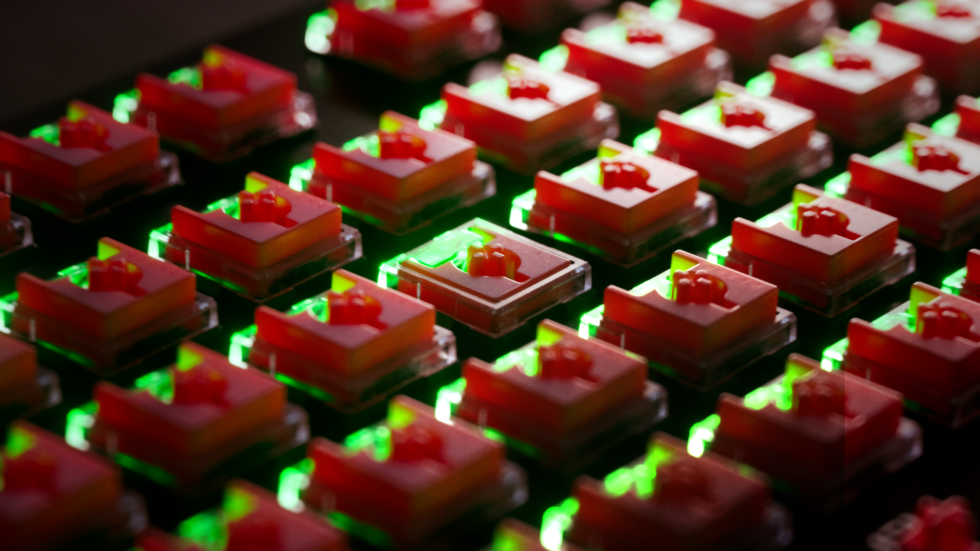
Many optical mechanical switches produce less lag because there’s no debounce delay, used by most keyboards to deal with contact bounce since actuation is light-based. Although a mainstream user likely won’t notice, this is another reason many gaming companies have started making their own optical mechanical switches.
The DeathStalker V2 uses ABS plastic keycaps that are laser-etched. As we said in our guide to mechanical keyboards, laser-etched keycaps are good for letting backlighting come through, but the legends will fade dramatically faster than pricier alternatives, like doubleshot legends.
Razer claims that the DeathStalker V2 Pro’s legends will last longer than typical laser-engraved legends because of an extra coating it uses, making the keycaps “outlast even the likes of doubleshot PBT.” We’ll believe it when we see it.
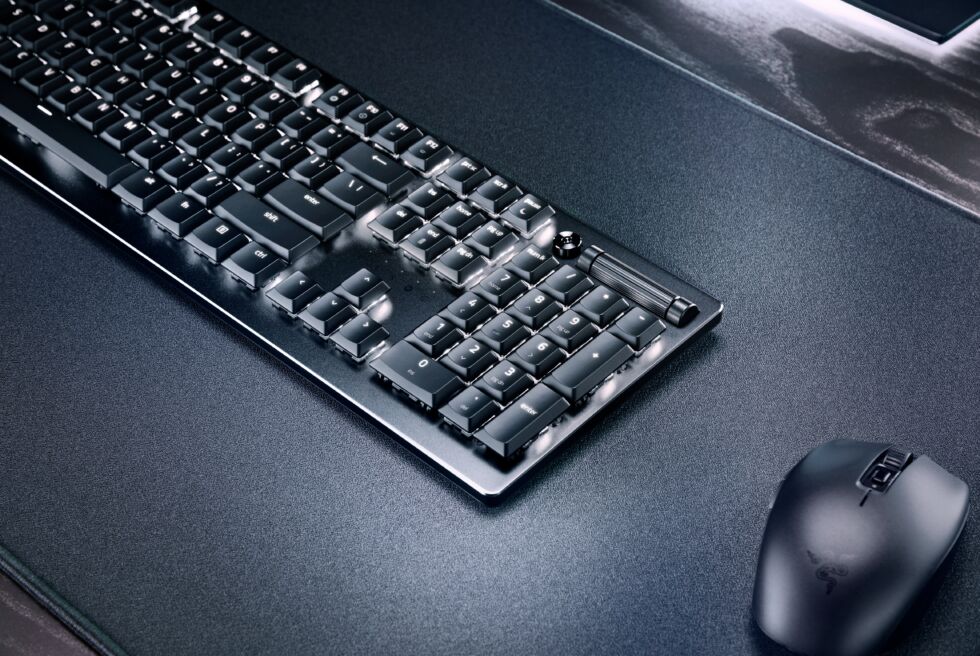
The keycap specs are surprising at the keyboard’s price, but part of the cost comes from wireless functionality. The DeathStalker V2 Pro (as well as the tenkeyless version) can toggle across three Bluetooth 5.0 devices with a button press and also connect to a computer via a USB-A dongle or its braided USB-C cable.
Razer completes the package with luxuries like five onboard memory profiles. The $250 price is still steep.
Ars Technica may earn compensation for sales from links on this post through affiliate programs.

